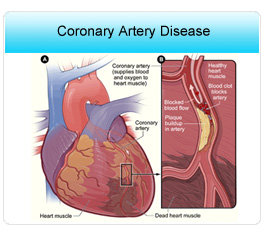| |
 |
| |
|
|
| |
The Heart is a strong muscular pump. The heart pumps blood to nourish all parts of the body, including itself. It is responsible for pumping about 3,000 gallons of blood throughout the body every day. The blood that nourishes the heart muscle flows through the coronary arteries.
Coronary artery disease is caused by atherosclerosis, which is a gradual buildup of plaque and fatty material inside the arteries. As the arteries narrow, less blood flows to the heart muscle.
If a clot plugs one of these arteries or blood flow decreases enough, the muscle, starved for oxygen, dies and a heart attack takes place. Like other muscles in the body, the heart itself needs to receive a good supply of blood at all times to function properly. |
|
|
|
|
|
Ejection Fraction ( EF ) |
|
|
|
|
|
EF indicates to the percentage of blood pumped out of heart chamber during each heat beat (systole). EF or LVEF (Left Ventricular Ejection Fraction) refers to a measurement of the left ventricle (the lower left chamber of the heart), which pumps oxygen-rich blood out to the body through the aorta.
|
|
|
|
|
|
|
|




